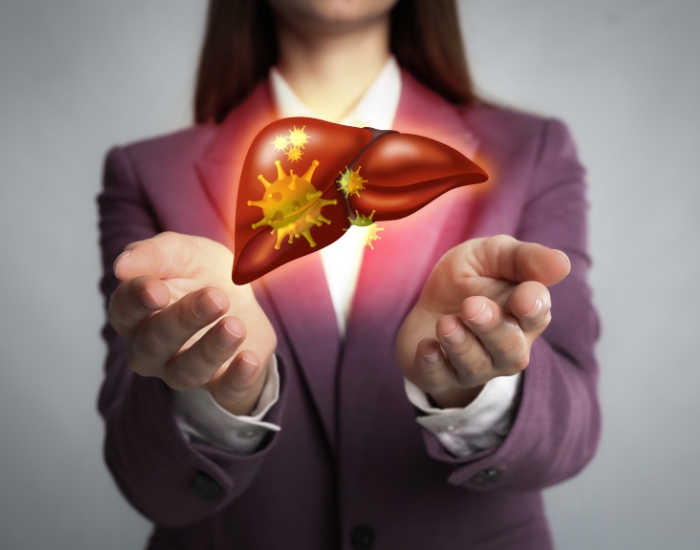Liver Cancer
Liver Cancer Specialists at Surgical Associates of Southern Texas
Katy & Sugar Land
Understanding Liver Diseases
The American Cancer Society (ACS) estimated 42,030 people will receive a liver cancer diagnosis in 2019, and predicted that 29,480 will be men. The liver is one of the largest organs of the human body. One of its essential functions is to eliminate toxins from the body.
What are the symptoms of liver cancer?
Liver diseases, including cancer, do not show serious symptoms until it develops to a more serious stage. Some liver cancer symptoms are:
- Feeling full after a small meal
- Fatigue
- Abdominal pain
- Pain close to the right shoulder blade
- Unexplained weight loss
- High calcium levels
- Low blood sugar levels
- Jaundice
- Bruising on the abdomen
- Swelling in the abdomen
- Fluid buildup in the abdomen
- Enlarged liver and/or spleen
- Visibly swollen veins on the abdomen
Liver Cancer Diagnosis
The treatment of liver cancer can be fairly simple if caught early. However, we believe it is better to err on the cautious side and give our patients the best liver cancer treatment in Houston
Stages
Treatment plans are guided by the stage to which a cancer has developed. Earlier cases are easier to treat, and our team of surgeons treats late stage liver cancers and diseases with expertise and excellent care.
Stage 1: The tumor is contained in the liver
Stage 2: Several small tumors develop within the liver or a tumor develops in a blood vessel
Stage 3: One or more large tumors reach a large blood vessel
Stage 4: Tumors metastasize to other parts of the body
Liver Cancer
Liver cancer is a potentially fatal condition which is growing rapidly in incidence in the US. One of the cancer forms with the greatest rate of growth in the US is primary liver cancer, a potentially fatal condition. Most common types of primary liver cancer are liver and bile duct carcinoma. Secondary tumors are most commonly metastatic lesions from cancer elsewhere and they are managed in a variety of different ways. he origins, risk factors, symptoms, and therapies of these cancer types are similar. In order to diagnose and treat primary liver cancer early , healthcare providers concentrate on identifying those who may be at elevated risk. At an average age of 67, primary liver cancer affects twice as many men as women in the United States. The location of the liver cancer, its size, whether it has spread, whether it is primary or secondary, and your general health all affect how deadly the cancer is.
Healthcare professionals can do more to treat liver cancer in its early stages, similar to how they can treat many other types of cancer. Healthcare professionals are very aware of what raises a person’s risk of acquiring liver cancer, unlike many other types of cancer.

How Does Liver Cancer Develop?
When liver cells experience DNA alterations the genome gradually changes with the eventua formation of primaryver cancer. Every chemical reaction in your body has a set of instructions contained in each cell’s DNA. These instructions vary as a result of DNA mutations. One outcome is that cells can start to multiply out of control and finally develop into a tumor. Primary liver cancer is more likely to develop in livers that have already been damaged by alcohol, Hepatitis B and C, Fatty liver/Steatohepatitis, or other chronic infections of the liver. Cirrhosis affects more than half of all patients with primary liver cancer. Common Hepatocellular diseases such Alcoholic hepatitis, fatty liver/Steatohepatitis, , hepatitis B, and C can harm the liver and slowly start the process of development of cirrhosis.
Is liver cancer a prevalent condition?
No, liver cancer is not frequent, but the incidence is definitely increasing. According to healthcare professionals, 1% of men and women in the US may receive a liver cancer diagnosis at some point in their lifetime.
Hepatocellular carcinoma (HCC)
With almost all occurrences of liver cancer falling under this category, it is the most prevalent type.
Angiosarcoma
Only 1% of instances of primary liver cancer are of this extremely rare form. Your liver’s blood cell lining is where this malignancy first manifests itself. (Other organs may potentially be impacted by angiosarcoma.)
Intrahepatic cancer (IHC)
This type of cholangiocarcinoma exists. IHC is bile duct carcinoma in the liver. It accounts for between 10% and 20% of all primary liver cancer cases.
Liver Cancer Diagnosis
Tests to identify both primary and secondary liver cancers include
CT scan
CT scans create three-dimensional images of many organs simultaneously and can aid surgeons in planning operations. It can also detect the spread of the disease.
Blood tests
Blood tests can evaluate your blood clotting capacity, the health of your liver, the presence of hepatitis B or C, hereditary issues, and specific substances known as tumor markers.
Ultrasound
An ultrasound provides images of the organ and can reveal the amount and location of abnormal tissue in your liver. This is the procedure that is most frequently used to check for primary liver cancer.
MRI
An MRI scan can reveal the amount of a tumor and whether it has affected the major blood arteries around the liver by creating comprehensive cross-sectional images of the body.
Biopsy
A biopsy is the removal of a tiny sample of tissue for microscopic analysis. Either a laparoscopy (keyhole surgery) under general anesthesia, which allows the doctor to view the liver and surrounding organs and obtain tissue samples, or a Needle biopsy by an interventional radiologist, which uses a local anesthetic are the common techniques of sampling a liver.
PET-CT scan
PET-CT scans generate three-dimensional, coloured pictures that show the location of most tumors in the body which are more metabolically active than the surrounding normal cells and are frequently employed to visualize secondary tumours in the liver.
What effects does liver cancer have on the body?
The largest organ in human body, the liver aids in food digestion . No one can survive without a liver, making it one of the most vital organs. Your liver performs a number of crucial processes, including:
- Gathers and filters blood that is being produced by the intestines.
- Absorbs nutrients from the intestines and processes and stores them.
- Transforms some nutrients into the energy or materials the body needs to create new tissue.
- Produces bile, a liquid that aids in fat digestion.
- Digests and stores additional meal ingredients, such as sugar, to produce energy.
- Produces chemicals that aid in blood clotting.
For primary liver cancer, who is eligible for surgery?
Anyone might be a candidate for surgery if, the liver’s cancer is contained to a single area and has not spread to other parts of the body. Blood tests may be performed to assess how effectively the liver is functioning. Therefore, the portion of the liver that is still there after surgery must function well to maintain overall health. The doctor uses the findings of blood tests and imaging like CT and MRI to assess whether surgery is the best course of treatment.
Surgical treatments for liver cancer
The best chance of curing primary liver cancer is through surgery. For early liver cancer, various surgical procedures are available.
Resection of the liver and lobectomy
This is also known as partial hepatectomyto remove the tumor along with a rim of normal tissue.. The doctor will only likely think about a resection if
- Small-scale cancer exists.
- The liver is in good condition.
- The blood vessels have not been invaded by the cancer.
If patients don’t have any underlying issues, like cirrhosis, the liver can regenerate and function correctly.
A liver transplant
A surgery to remove the liver and substitute it with a healthy liver from a donor is known as a liver transplant.
Some individuals with hepatocellular liver carcinoma may be candidates for a liver transplant. A liver transplant may be an option if:
- A solitary tumor that is no larger than 5 cm.
- A single, 5 to 7 cm wide tumor that has not developed for at least six months.
No more than five tiny tumors, each measuring no more than 3 cm.
Testimonials
How Patients Value Our Care
Our Blogs: General Information

Early Warning Signs of Liver Cancer
Liver cancer often develops quietly, especially in its early stages, which can make it difficult to detect. The warning signs of liver cancer are often subtle and may not cause immediate concern,…
Making the most of surgical outputs
Having one-on-one interaction with our top surgeon helps in understanding the complete surgical procedure. Whether it is for general surgery or surgical oncology, we try to ensure best surgical outputs for local and overseas patients.
Accepting Patients From Greater Houston, Katy, Sugar Land, Richmond, Fulshear Areas.
Patients visiting from the greater Houston and other areas of Texas are requested to call us for a confirming appointment. Overseas patients request us to contact us in advance for a detailed consultation.
Get Directions…….
